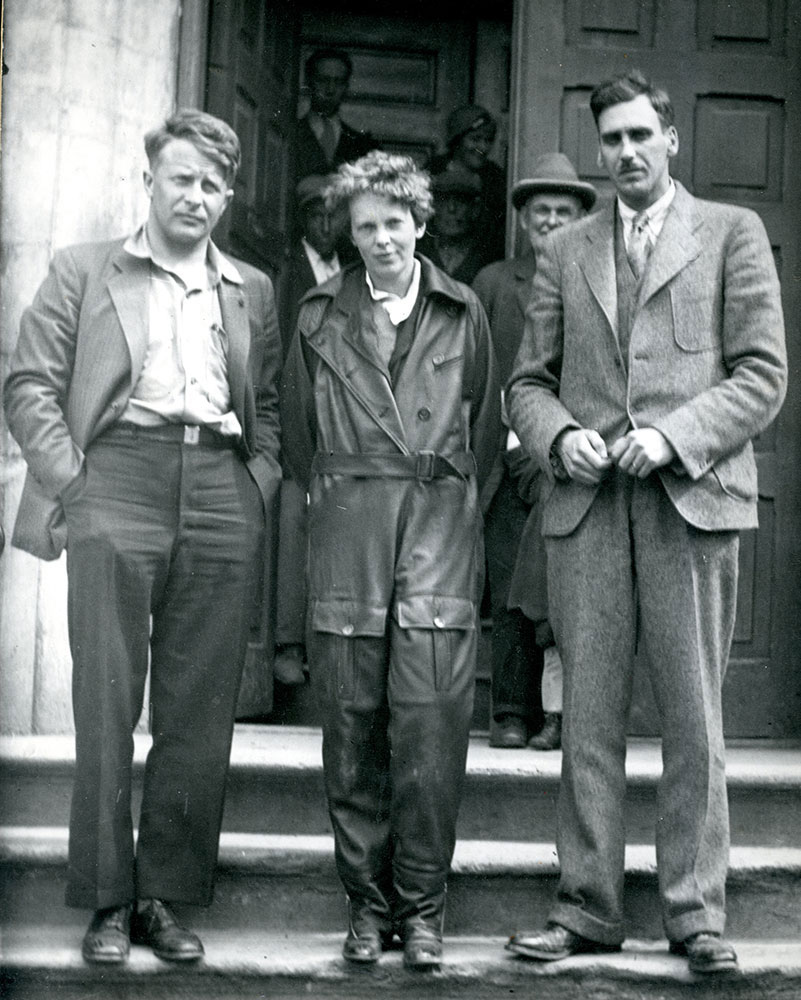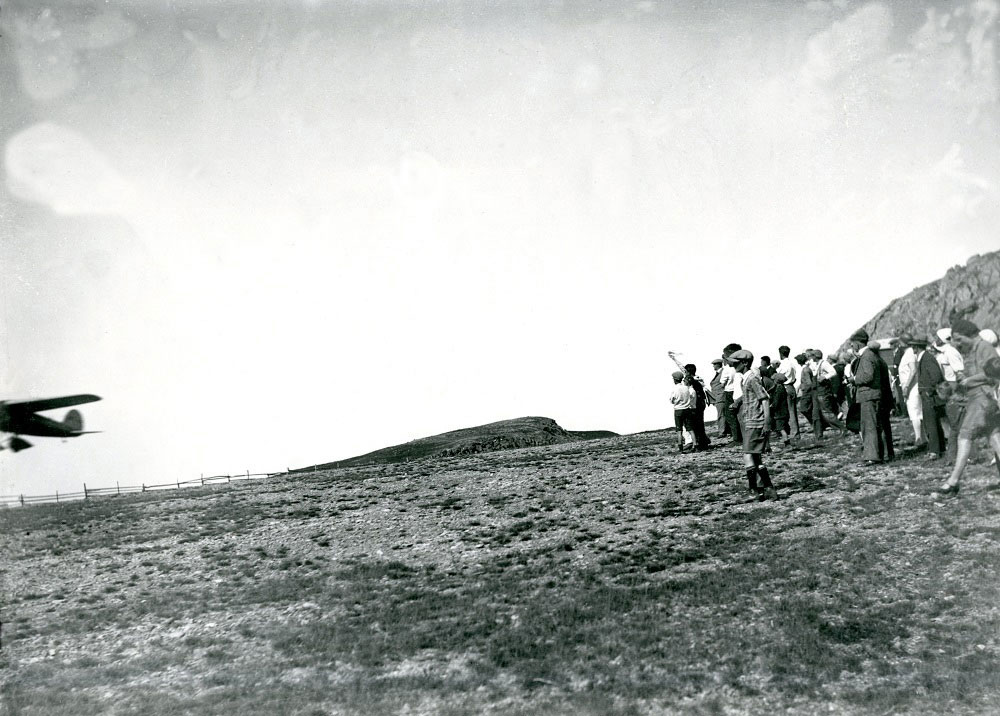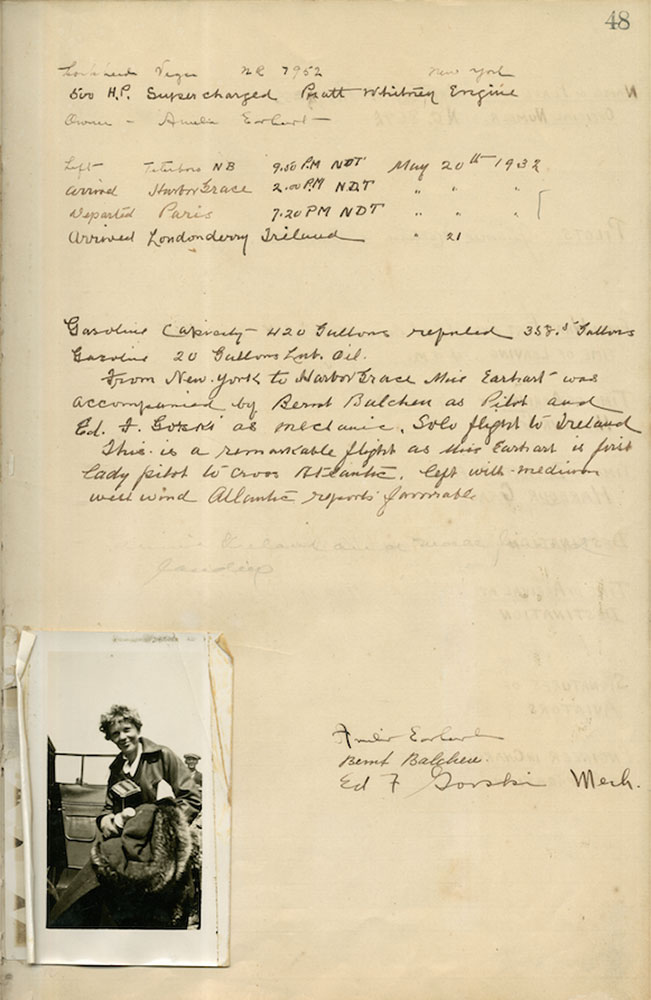The Trailblazer: Amelia Earhart in Harbour Grace (1932)
Amelia crossed the Atlantic as a passenger in 1928 from Trepassey, Newfoundland, to Burry Point, Wales. Her sights were now set on conquering the Atlantic Ocean as a pilot, by herself, alone among the stars. And she wanted to be the first!
After months of planning, her team decided that the Harbour Grace airstrip would be the ideal hop-off point for her transatlantic adventure.

Bernt Balchen (left), Amelia Earhart (centre), and Lewis L’Esperance (right) at the old Post Office in Harbour Grace, 1932.
On May 20, 1932, Earhart, Ed Gorski, her mechanic, and Bernt Balchen, the respected Norwegian aviator, left New Jersey, at 3:15 p.m. and headed to New Brunswick. But their secret destination was Harbour Grace.
There were other female pilots trying to become the first to cross the Atlantic. To avoid press attention and prying eyes, Balchen did the majority of flying and even registered Earhart’s Lockheed Vega in his own name.
At 2:00 p.m. local time, Earhart’s single-engine Lockheed Vega monoplane landed at the Harbour Grace airstrip. From there, Earhart went to the Cochrane Hotel for a short rest. Balchen and Gorski stayed at the airfield to prepare the aircraft for takeoff.
At the hotel, Earhart met Rose Archibald, the owner of the now-iconic establishment. She prepared tomato juice and a thermos of soup for Earhart to take on her flight.
Local man Arthur Rogers drove Earhart back to the airstrip to begin her iconic journey. A large, excited crowd had gathered for her takeoff, scheduled for 7:20 p.m.
Enjoy this silent video of Amelia Earhart’s historic takeoff (with a descriptive transcript).
Four hours from Harbour Grace, the plane’s exhaust manifold broke, and flames were shooting from the vent, threatening the success of the flight.
Soon the altimeter malfunctioned, which resulted in Earhart flying blind for five hours in the dark, over the ocean. To make matters worse, she dealt with thick clouds and ice developing on the wings of her aircraft.
On May 21, unable to make it to Paris as Lindbergh had in 1927, Earhart landed in a cow pasture belonging to the Gallagher family. It was located just outside the small village of Culmore, north of Londonderry, Northern Ireland.
The Gallaghers kindly offered Earhart a room for the night, which the aviator gladly accepted. The record-breaking flight took fourteen hours and fifty-six minutes after her departure from Harbour Grace.
The next day, on May 22, Earhart waved goodbye to the townspeople and headed for Hanworth Airfield, London, England, where a large group of reporters and fans waited to greet her.
This flight established Earhart as an international feminist icon and earned her many awards. These include the Gold Medal from the National Geographic Society, the Distinguished Flying Cross from the U.S. Congress, and the Cross of the Knight of the Legion of Honor from the French government.
Decades after her presumed death, Earhart was inducted into the National Aviation Hall of Fame in 1968 and the National Women’s Hall of Fame in 1973.



